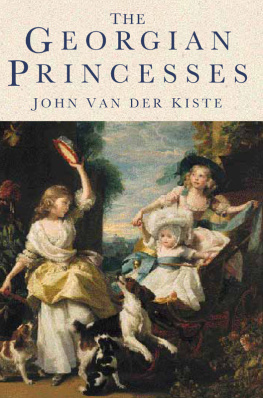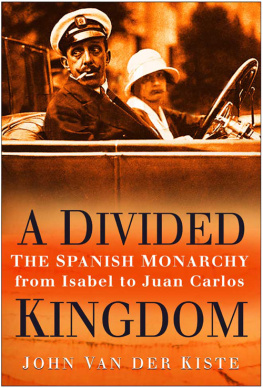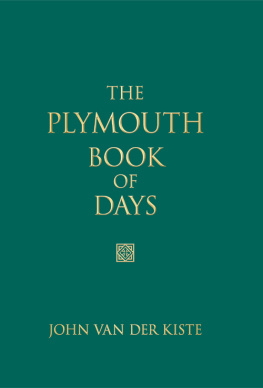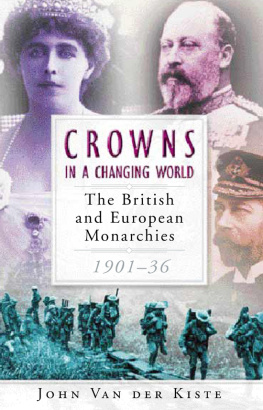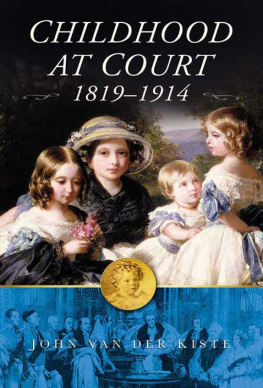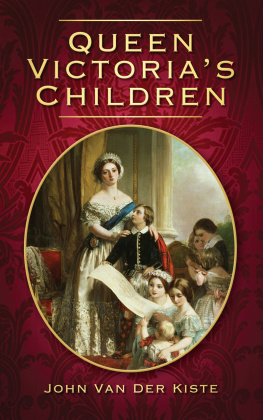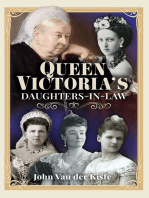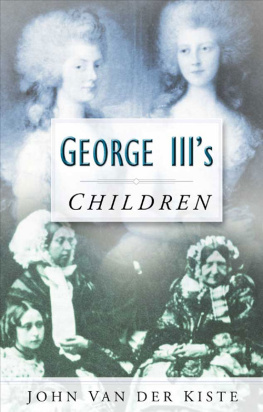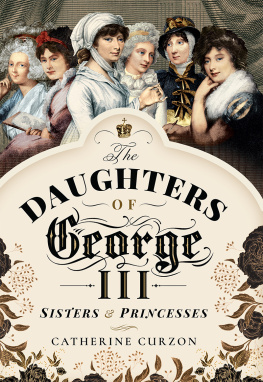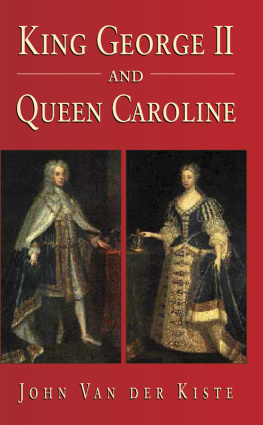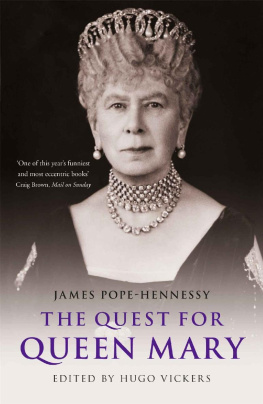T HE
G EORGIAN
P RINCESSES
A LSO BY J OHN V AN DER K ISTE
Published by Sutton Publishing unless stated otherwise
Frederick III, German Emperor 1888 (1981)
Queen Victorias Family: a select bibliography (Clover, 1982)
Dearest Affie: Alfred, Duke of Edinburgh, Queen Victorias Second Son, 18441900 [with Bee Jordaan] (1984, n.e. 1995)
Queen Victorias Children (1986; large print ISIS, 1987)
Windsor and Habsburg: the British and Austrian Reigning Houses 18481922 (1987)
Edward VIIs Children (1989)
Princess Victoria Melita, Grand Duchess Cyril of Russia, 18761936 (1991, n.e. 1994)
George Vs Children (1991)
George IIIs Children (1992)
Crowns in a Changing World: the British and European monarchies 190136 (1993)
Kings of the Hellenes: The Greek Kings 18631974 (1994)
Childhood at Court 18191914 (1995)
Northern Crowns: The Kings of Modern Scandinavia (1996)
King George II and Queen Caroline (1997)
The Romanovs 18181959: Alexander II of Russia and his Family (1998)
Kaiser Wilhelm II: Germanys Last Emperor (1999)
Gilbert & Sullivans Christmas (2000)
Dearest Vicky, Darling Fritz: Queen Victorias Eldest Daughter and the German Emperor (2001)
Royal Visits in Devon and Cornwall (Halsgrove, 2002)
Once a Grand Duchess: Xenia, Sister of Nicholas II [with Coryne Hall] (2002)
T HE
G EORGIAN
P RINCESSES
J OHN V AN DER K ISTE

First published in 2000 by Sutton Publishing
This Paperback edition first published in 2002
The History Press
The Mill, Brimscombe Port
Stroud, Gloucestershire, GL 5 2 QG
www.thehistorypress.co.uk
This ebook edition first published in 2013
All rights reserved
John Van der Kiste, 2000, 2002, 2013
The right of John Van der Kiste to be identified as the Author of this work has been asserted in accordance with the Copyrights, Designs and Patents Act 1988.
This ebook is copyright material and must not be copied, reproduced, transferred, distributed, leased, licensed or publicly performed or used in any way except as specifically permitted in writing by the publishers, as allowed under the terms and conditions under which it was purchased or as strictly permitted by applicable copyright law. Any unauthorised distribution or use of this text may be a direct infringement of the authors and publishers rights, and those responsible may be liable in law accordingly.
EPUB ISBN 978 0 7524 9491 3
Original typesetting by The History Press
Contents
Sources and Acknowledgements
Excluding those who died in infancy, most of the Princesses have claimed the attentions of earlier biographers to some extent. Not surprisingly the most wayward and notorious of them all King George IVs wife Caroline, the self-proclaimed injured Queen of England has inspired several studies since her death; while almost as many can be found about their daughter Charlotte. Others have been less fortunate; no individual biography of Queen Adelaide has been published since 1946, nor of King George IIs Queen Caroline since 1939 notwithstanding the present authors joint study of the King and Queen published in 1997. One would search in vain for a life of the latters daughter-in-law Augusta, Princess of Wales, her sister-in-law Sophia Dorothea, Queen of Prussia, and most of the daughters of King George III and Queen Charlotte. Of the daughters of King George II, only the eldest, Anne, Princess Royal, has been thus honoured, yet had to wait till 1995 for a full biography.
Nevertheless several collective biographies have covered some of the above. From the nineteenth century Dr Dorans Lives of the Queens of England of the House of Hanover and Percy Fitzgeralds The Royal Dukes and Princesses of the Family of George III, both in two volumes, spring to mind, while in the twentieth century Dorothy Margaret Stuarts Daughters of George III, supplemented to some extent by Morris Marpless Six Royal Sisters, remains invaluable some sixty years after its first appearance. The present work aims to take this process a stage further in surveying as a whole these royal lives which between them spanned the era from the Civil War in the first half of the seventeenth century to the first twenty years of Victorian England. Acknowledgements to specific sources are in the Notes; a full list of books consulted can be found in the Bibliography.
I wish to acknowledge the gracious permission of Her Majesty The Queen to publish certain material of which she owns the copyright.
This book is respectfully dedicated to the memory of my father, Wing-Commander Guy Van der Kiste, who sadly passed away in September 1999 shortly before it was completed, and with particular thanks to my mother Kate, who nevertheless was a tower of strength as ever in reading through the draft. In addition I would like to thank the staff at Kensington & Chelsea Public Libraries for much-appreciated access to their collection; my friends Karen Roth, Sue Woolmans, Robin Piguet, Robert Hopkins and Dale Headington, for their constant help, interest and encouragement over several months; and to editors, Jaqueline Mitchell and Helen Gray, who made the book possible through overseeing it from initial planning stages to completion.
John Van der Kiste

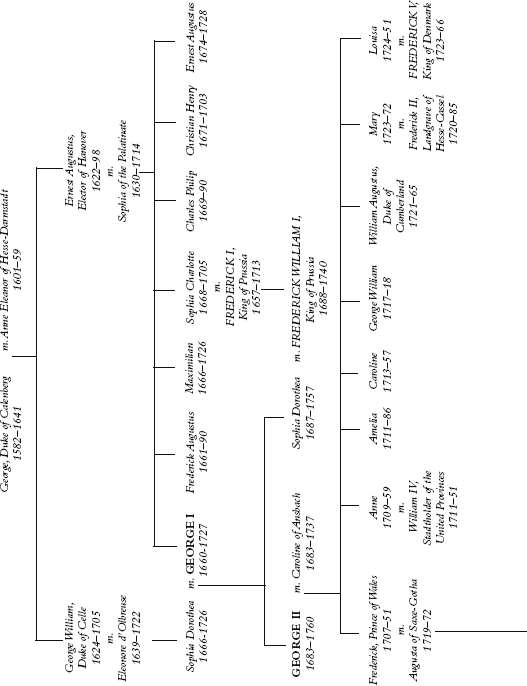
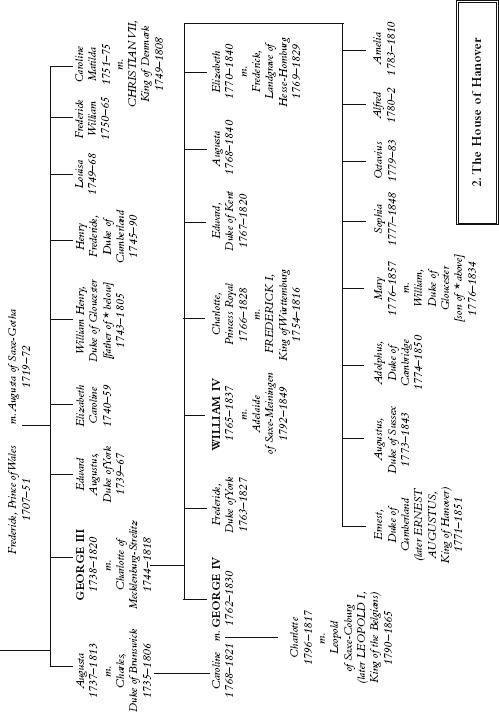
Introduction
In the seventeenth, eighteenth and nineteenth centuries there was little choice available for a princess of the royal blood in Europe. The lives of their brothers were generally preordained a throne for the eldest, education through foreign travel and perhaps token attendance at university, followed by military or naval service and a dukedom. Theirs were also generally carved out according to equally narrow choices marriage to a foreign prince who might be heir to a kingdom, empire, duchy or electorate for some, or tedious spinsterhood and perhaps life in a nunnery for the others. Those who married crowned heads of the future were not always the most fortunate. The first of the Georgian Princesses of this book, born Sophia, Princess of the Palatinate, was the youngest daughter of the ill-fated Frederick, King of Bohemia and his wife Elizabeth, known to posterity as the Winter King and Queen in view of their brief reign which ended with Fredericks defeat in battle in 1620. The two daughters who took the veil might have considered themselves more fortunate than their mother, destined to eke out a widowhood of thirty years in circumstances which were certainly not affluent by royal standards.
Yet Sophia, who lost her father when she was two years old, made a marriage which was not in itself dazzling. Nonetheless, thanks to the vicissitudes of her relations in a turbulent age, she was destined to become the mother of the Hanoverian dynasty in Great Britain, and had she lived six weeks longer she would have become Queen Regnant, at the remarkable age of eighty-three.

